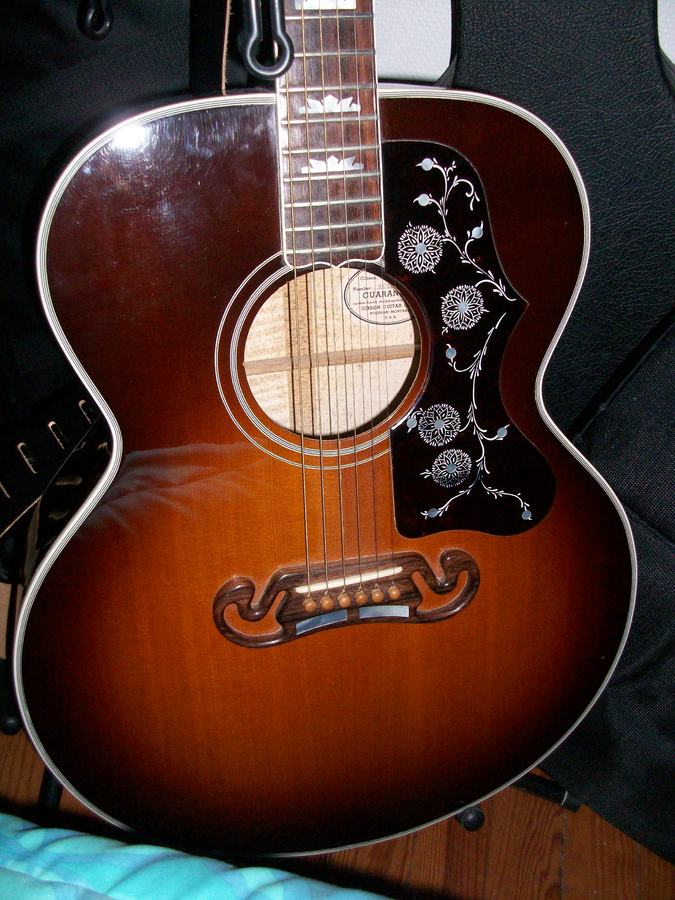
All the Martin shapes were well defined in those days, and Gibson wanted to come up with something different. It’s a different shape than a dreadnought, but it’s a big guitar. The J-200 model had a lot of inlays and decorations, and was considered to be top of the line. Post World War II, it became known as the J-200, and the names are now used interchangeably by most people. The result was the prototype for the Super Jumbo - which was called the SJ-200 due to its original $200 price. Autry had a fancy mother-of-pearl-adorned Martin dreadnaught. Ray Whitley, who was a cowboy movie idol, approached Gibson in 1937 about having a guitar designed to outdo Gene Autry, a rival Western crooner. The Martin D-45 dreadnought Mwas introduced in 1934, and the J-200 was a response to the Martin big-body guitars.

The ’30s were an interesting era - performers wanted to play in auditoriums, but needed guitars that were capable of projecting into the bigger rooms. The “singing cowboy” phenomenon of the 1930s was the main inspiration for Gibson’s J-200.

Gibson and Martin were the two big shots, and they tried to compete with each other. There was a lot of stiff competition at the time between the two big guitar-making companies. Marty Lanham of Guitar Craft Academy Nashville plays a Gibson J-200 guitar originally owned by Johnny Cash, which he rehabilitated for Marty Stuart, the guitar’s current owner.Ĭould you talk about the history of the Gibson J-200 acoustic guitar?


 0 kommentar(er)
0 kommentar(er)
